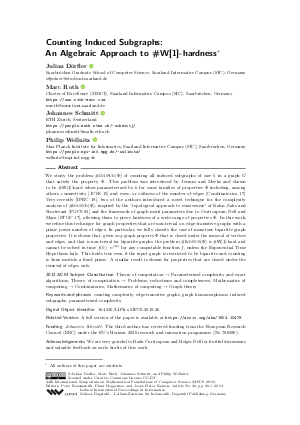@InProceedings{dorfler_et_al:LIPIcs.MFCS.2019.26,
author = {D\"{o}rfler, Julian and Roth, Marc and Schmitt, Johannes and Wellnitz, Philip},
title = {{Counting Induced Subgraphs: An Algebraic Approach to #W\lbrack1\rbrack-hardness}},
booktitle = {44th International Symposium on Mathematical Foundations of Computer Science (MFCS 2019)},
pages = {26:1--26:14},
series = {Leibniz International Proceedings in Informatics (LIPIcs)},
ISBN = {978-3-95977-117-7},
ISSN = {1868-8969},
year = {2019},
volume = {138},
editor = {Rossmanith, Peter and Heggernes, Pinar and Katoen, Joost-Pieter},
publisher = {Schloss Dagstuhl -- Leibniz-Zentrum f{\"u}r Informatik},
address = {Dagstuhl, Germany},
URL = {https://drops-dev.dagstuhl.de/entities/document/10.4230/LIPIcs.MFCS.2019.26},
URN = {urn:nbn:de:0030-drops-109703},
doi = {10.4230/LIPIcs.MFCS.2019.26},
annote = {Keywords: counting complexity, edge-transitive graphs, graph homomorphisms, induced subgraphs, parameterized complexity}
}

 Creative Commons Attribution 3.0 Unported license
Creative Commons Attribution 3.0 Unported license
